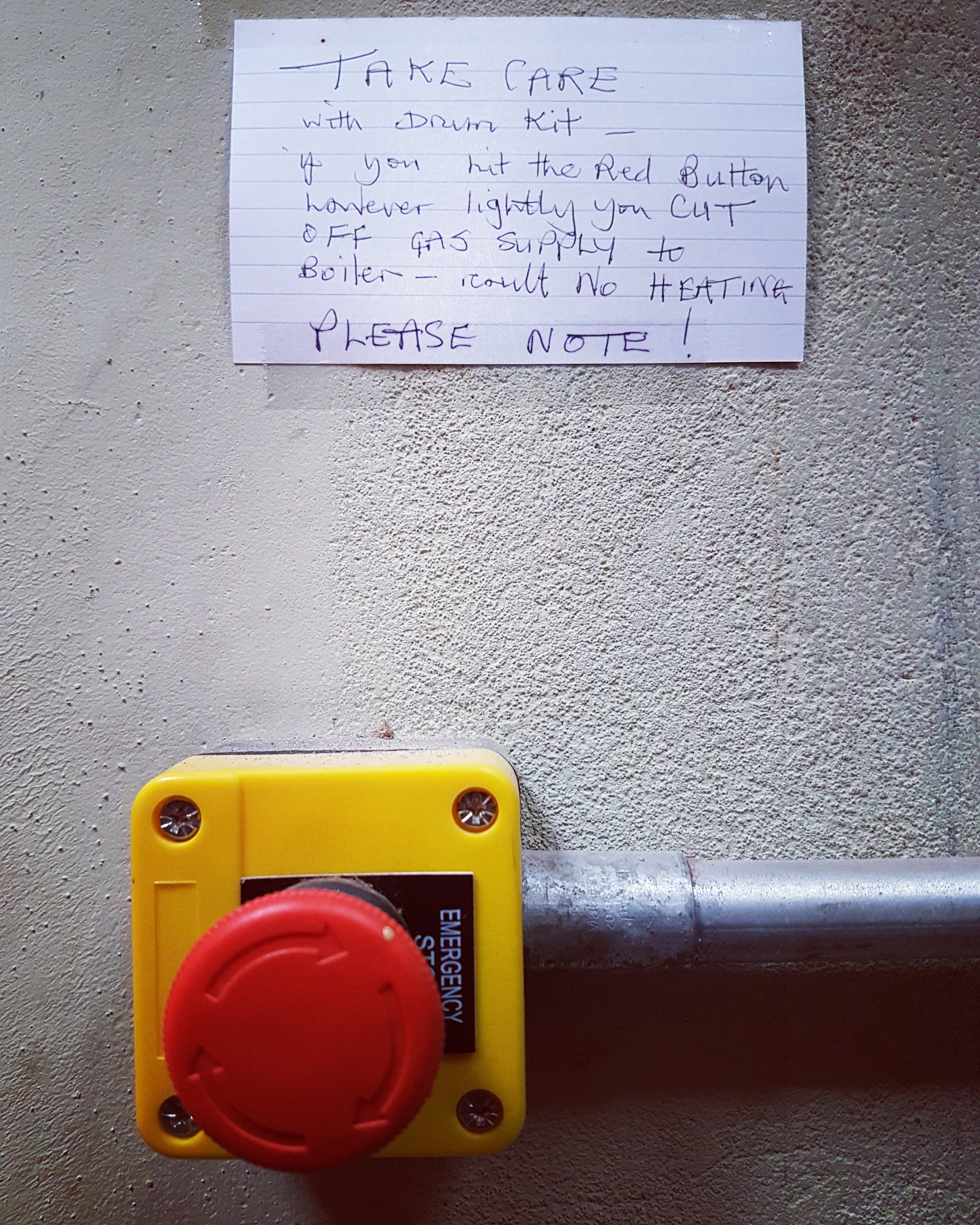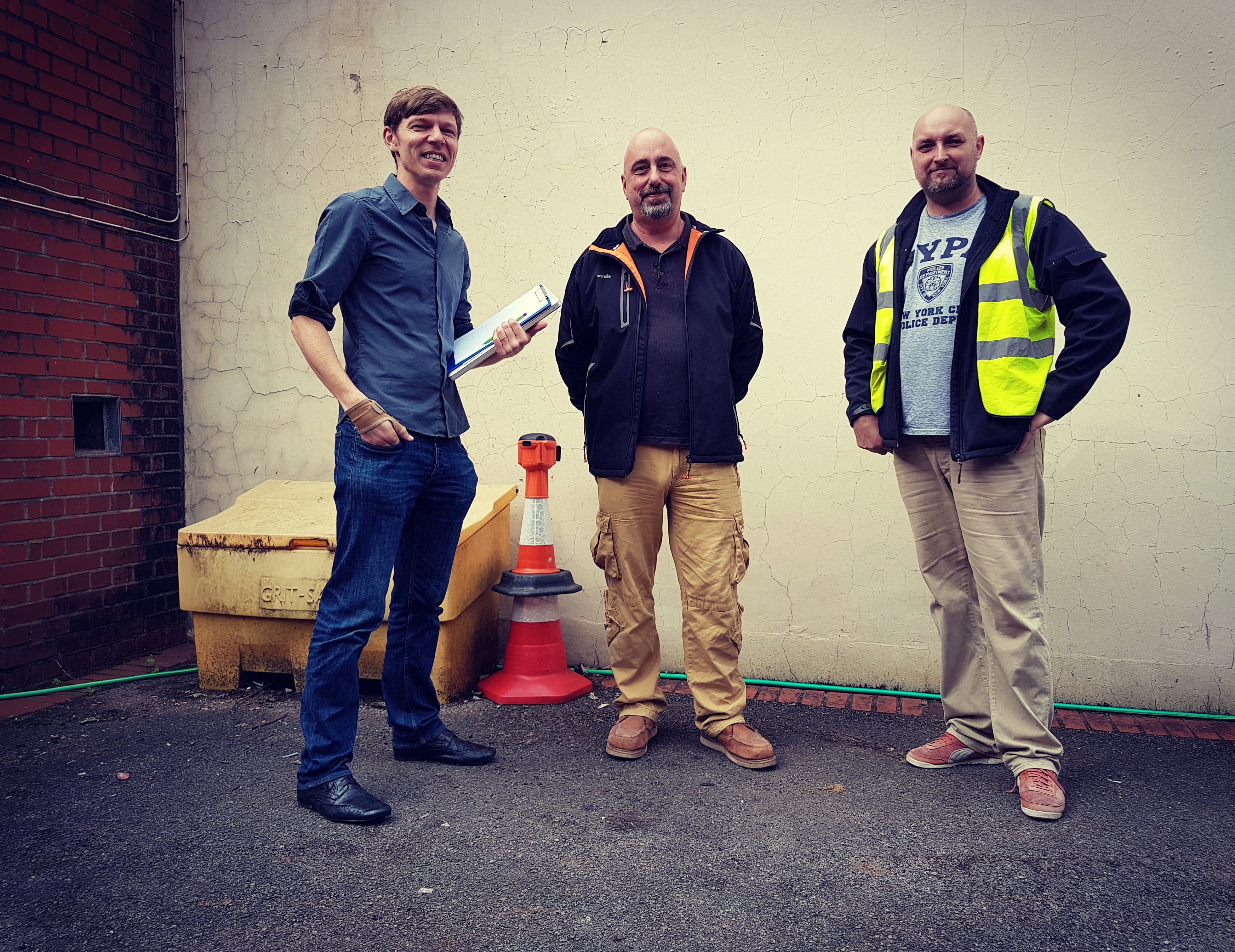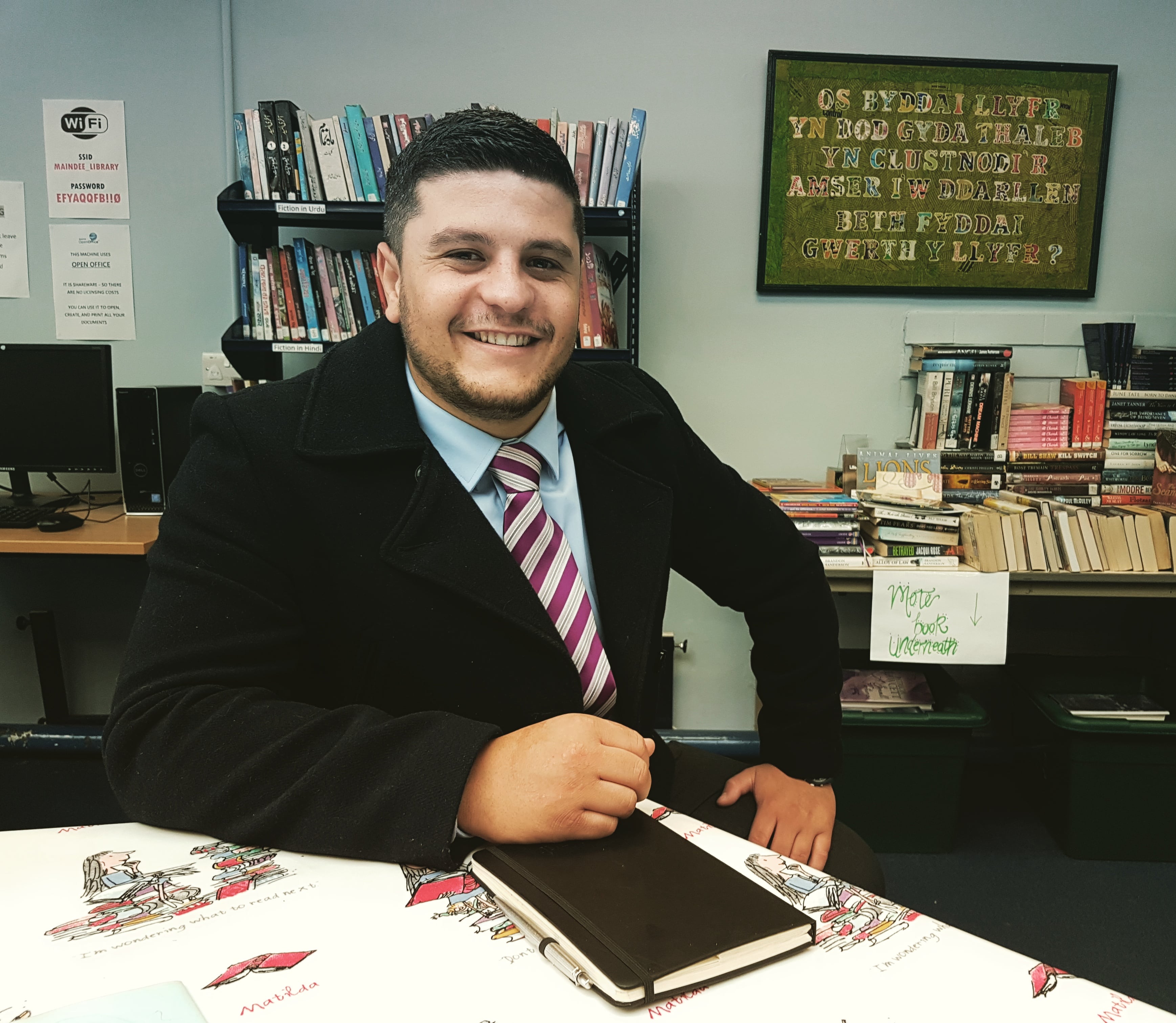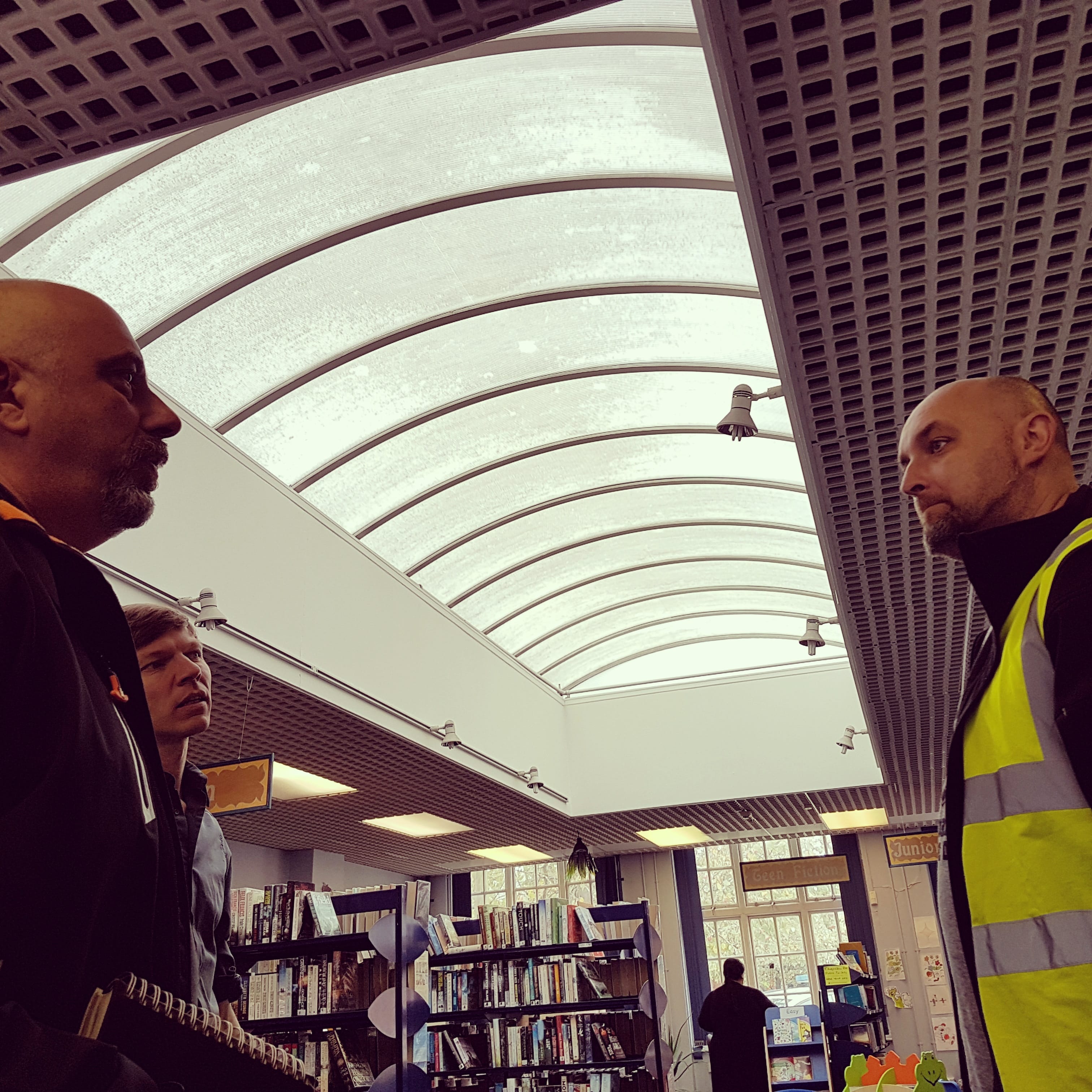Writing this article in early October 2017 we are getting close to making the first changes to the Maindee Library building. Everybody asks why things seem to take such a long time to happen?
Practicalities of the Maindee Library Refresh
Writing this article in early October 2017 we are getting close to making the first changes to the Maindee Library building. Everybody asks why things seem to take such a long time to happen? The honest answer is that as we explore this building we sense that it has its own personality and that there are many complex relationships between all the different processes [not least human behaviours] needed to make the refresh happen.

This piece of writing explores how changing one part of the building will have knock-on effects in other parts [see real image above taken of the library boiler room]. We also deliberate embracing renewable heating systems… the upfront capital price versus the lifetime running costs. In many respects we hope that other small charities will be able to read this account and benefit from our little adventure...
The state of play in October 2017
Since the summer we have been working with architects George Lovesmith and Sarah Hollingworth to help us plan and deliver our building project. As Alison Starling, the treasurer of Maindee Unlimited, said - “we have to do it with less dosh but more love.” The chair of trustees David Moses now sees the word refresh as making more sense; it’s like we can purchase a few well chosen items for our outfit rather than having a whole wardrobe.
So we have now got a 25 year lease from Newport City Council and in September we agreed the first phase of work to the building, with the small spaces [kitchen, toilet and meeting room] described in the film with Kim and Maggie to be refreshed In the past week we have also started to meet contractors who may be interested in doing the work with us. We have also met Gerard from Newport City Council Building Control Team to discuss the application for building regulations. We have also re-checked the plans to see how the building actually works in three dimensions. It was worth doing this as there is a bit of the Police Station above our space that was not obvious...
So the first phase plans for the drawings will be presented to the library volunteers on Monday 8th October. As much as making a first phase is what project managers would call a milestone, or perhaps a chance to stop and take breath, we also have to think ahead about what this means for second phase of work in the library main space. For some time the architects have been telling us how creating the meeting room for Phase 1 has a significant knock-on effect for the whole heating and ventilation system: after all the new meeting room is the current boiler room. We could either move the boiler a bit or completely change the system...
Why heating makes you think holistically - and environmentally...
From our research into air conditioning back in January 2017 [see blog article] we started to have an understanding of the options for heating. However, our architect George Lovesmith arranged for us to meet a contractor on September 27 who would give us some thoughts on a renewable heating and cooling heating system. Adrian, from Woodgates in Bristol, explained that the most viable option for the library is probably an air-source heat pump. This system works a bit like a fridge in reverse, by taking heat from the air to heat up water which is then either pumped through radiators or underfloor heating. There is a nice article on the Energy Saving Trust website. As we looked around the building we found out from Adrian that some renewables attract a VAT rate of 5% rather than the 20% which normally applies. Apart from the ethical reasons for going green, the chance of a reduced VAT bill was very attractive...
As we talked more to Adrian and his colleague Pete [pictured below centre and right with George to the left] it emerged that the size and type of windows, and their predicted heat loss, feed into the calculations from which renewable heating and cooling systems are designed. The aim of the contemporary system is to keep a constant temperature in the building throughout the year. Whilst that sounds fine for keeping it warm in the winter months, there is still the effect of the summer sun. Our architect George told us that he and his colleague Sarah had been thinking about changing the little wood-framed panes of glass at the front and back of the main space towards double-glazed windows. This would look more like shop fronts with big open sheets of glass. Not only would this be cheaper to buy, but also this would reduce the noise which comes in from the street and save us lots of money long term by reducing heat loss.

So it turns out that the type of windows are pretty critical to understand how to plan our heating and cooling system for the building. People who came to the You be the Architect session in August - blog link here - may remember that repairing these single glazed wooden windows at the front and the back of the building could cost us £20,000. Whilst many of us felt that we should probably forego this cost on a sunny evening in early August, we do come back to the same critical questions again in late September as the weather is getting colder.
We also have to think of the practicalities for a community building run by volunteers. We are unlikely to have a handbook for the ins and outs of a heating system. People will just want to press the on and off switch like they do now. And to make small temperature adjustments people will want to slightly open the window in the summer or put on an extra heater in the winter. However, with large shop-front windows there is no chance of letting a little bit of cool air in. And, anyway, do we want to pay for the electrical energy that cools the building down? More questions...
We realised that we really don’t know a great deal about renewable heating and cooling systems. We were advised that Travis Perkins have a very helpful service which will design and recommend systems for businesses and charities like us. A call was made and a man called Mario made a trip from Bridgend to Maindee to check out the building.
Meeting Mario in Maindee
Mario Nash came to the library at the start of October. He explained that he works for Sustainable Building Solutions, a branch of Travis Perkins that provide the type of renewable heating and cooling systems that Adrian had started to outline the week before. Mario told us that renewable heating systems were currently very attractive as they can lead to a Government subsidy called the Renewable Heating Incentive [RHI] for every kWh of energy generated. Although we would need to design a specific system and have it installed by qualified people, we may be eligible for 20 years of payments from the non-domestic Renewable Heating Incentive [RHI] if we went for something like air-source heat pumps...

Mario explained that an air-source heat pump would be mounted somewhere on the outside of the building. The pump is connected to a cylinder which in turn feeds into radiators or an underfloor heating system. The radiators or underfloor heating would provide extra heat when required. Whilst the underfloor heating systems could allow us to zone heat to different parts of the main space, this would mean that we also need a new floor covering. Radiators could potentially replace the old ones that we have already. And most likely we would need to have another system for cooling down when the building gets warmer, unlike air-conditioning.
There was also a suggestion from somebody else that we could have some sort of canopy on the front of the building to stop so much sunshine coming in during the summer. Potential to consider for the spring when we look at the outside of the building…?
So what have we learned? And what do we need to next?
-
There are definite ethical reasons to go for a renewable heating system
-
We could pay less VAT for a renewable heating system. This is important as we are a small charity and cannot claim VAT back
-
We could earn some money from the RHI… again this is important
-
Changing the windows has an impact on heating requirements [and cooling]
-
And how do we cool the building down if can’t open the windows easily?
-
Would we be paying for an electric fan in the summer?
-
-
Would we want heating to come from the floor?
-
Could an air-conditioning system still be an option?
We are now waiting for some cost estimates for the type of system that Travis Perkins recommend. Of some importance we will also understand the potential income from the RHI. We also need to really think through how different spaces within the library will have different heating and cooling requirements. For example, though it should be easy enough to regulate temperatures in the meeting room that we will create for Phase 1, how about the main library space? Do we ask seemingly crazy questions like… do books retain heat? Are they a heat buffer?

Having spent time nearly two years running the building, there seem to be some different behaviours in different parts of the main library space
-
A meeting space for Job Clubs, the Road to Wellbeing sessions [sometimes 60 people] and New Paths gatherings [currently at the front and by the south-facing windows]
-
Quiet workshop and work/study space [currently at the back and a bit colder]
-
Book space [pictuerd above in the middle of the main room and under the roof light]
-
Children's space [currently at the back next to windows and the radiator]
-
Flexible space for tables to read/meet and for the serving desk [down the side away from the windows, where people can plug in fans and heaters if required]
This October we can share these stories and get some feedback from library volunteers, users of the space and the public.
And thanks for all the advice we have received so far!
We are grateful for the enthusiasm to share knowledge and ideas shown by people like Lyn from Phoenix Aircon, Adrian from Woodgates and Mario from Travis Perkins. We still have to make some hard decisions about how to spend our budget - balancing short-term capital investments versus long-term daily revenue costs - so we cannot be sure who we will work with. However, we can only say thanks so far for helping us to find our way with the library refresh. We hope that we have understood all of the technical detsails...
The contact details for these companies are on the links below.
Pontypool-based Phoenix Aircon
Eco-builers Woodgates from Bristol
Sustainable Building Solutions at Travis Perkins
Renewable heating advice Energy Saving Trust website
More about the Renewable Heating Incentive
Latest plans for the Library Phase 1